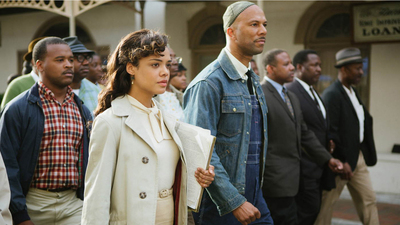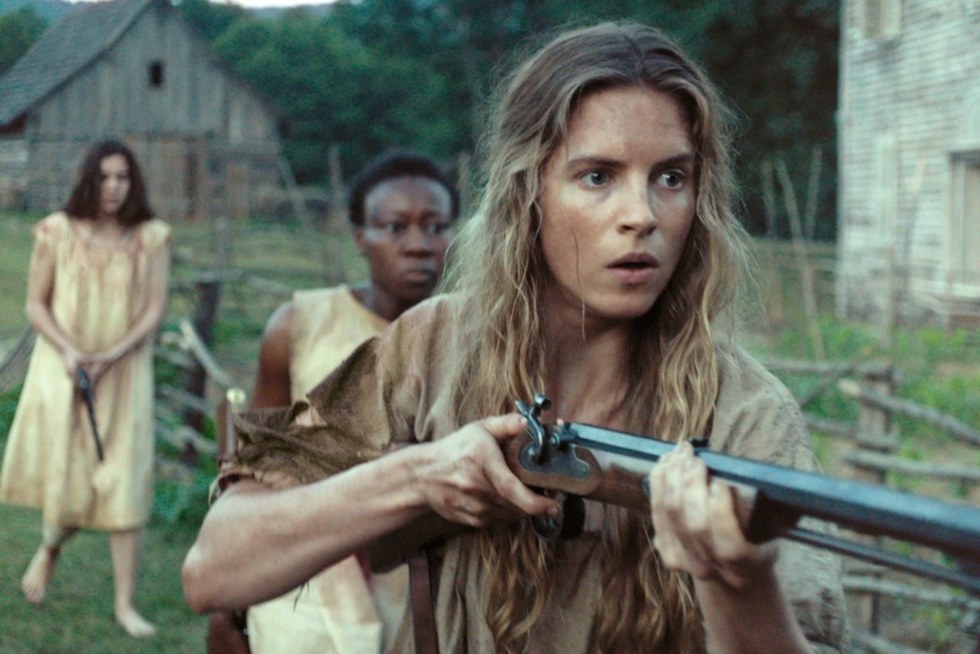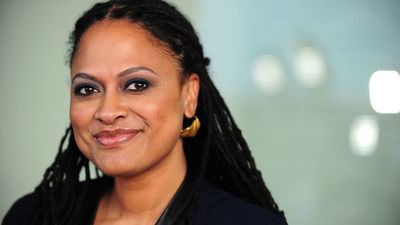
BY MATT BARONE |
Battle Cry: Approaching the Civil War From a Woman's Perspective in THE KEEPING ROOM

The American Civil War, which ripped the nation apart from 1861 through 1865, is known historically for its central "brother versus brother" conflict. But what about the sisters and mothers? Granted, there are a few books on the fairer sex’s role in the Civil War, and there’s also the story of Jennie Wade, a.k.a. the massive Battle of Gettysburg’s only direct civilian casualty. But there were obviously more than just few women alive during those years—why haven’t more people told their stories?
First-time screenwriter Julia Hart thought the same thing a few years back. After teaching high school English for eight years, Hart decided to follow in her father James Hart’s footsteps and start writing screenplays; her dad penned the scripts for Hook (1991) and Bram Stoker's Dracula (1992), among other films. Hart’s big must-write idea hit her while she and her husband, film producer Jordan Horowitz, were on a trip together at their friend’s farmhouse in Georgia. After they'd consumed a bunch of moonshine one night, the homeowner told Hart and Horowitz about one of the big myths surrounding the property: as word has it, two Union soldiers' bodies were found buried on the grounds.
Hart couldn’t stop thinking about the how's and why's of that. "I was fascinated by how those men would have ended up there, and who would have put them there," says Hart, 33. "And that led to me thinking about how it could have been done by the women who were at the house at the time."
Those were the earliest seeds for The Keeping Room, Hart’s first produced screenplay. Opening in limited release this weekend, the film, directed by Daniel Barber (Harry Brown), takes place on and around an isolated farm in the Carolinas in 1865. Two sisters, played by Brit Marling (Sound of My Voice) and Hailee Steinfeld (Pitch Perfect 2), are surviving on their own alongside Mad (Muna Otaru), their family’s last remaining slave. The older sister, Augusta (Marling), treats Mad with respect, while the younger sibling, Louise (Steinfeld), continues to look down on her, due to her family’s southern-minded belief system. The three women are forced to abandon all racial tension and social rankings, though, when two malevolent Union soldiers (Sam Worthington, Kyle Soller) show up on their land looking to rape, pillage, and wreak havoc.
Subverting the oppressed-underdog-fights-back and rape/revenge sub-genres' tropes, The Keeping Room is part lo-fi action movie yet all pro-woman empowerment, backed by a trio of excellent performances and Hart’s thoroughly character-driven script. Every other film set in the Civil War focuses on the male soldiers' experiences or the horrific ordeals encountered by slaves; The Keeping Room, however, is purely feminine and skillfully sidesteps racial turmoil in favor of a colorblind womanly bond. "I wanted to specifically tell a story about the rural, impoverished female experience during the Civil War," explains Hart. "You have Gone with the Wind, but that’s very much about the affluent white female experience. It was important to me to show not only a more in-depth female experience but a very specific female experience. I wanted to show that there were women who weren’t Scarlet O'Hara who were living and dying in that world."
Here, Hart discusses the importance of giving history's women more prominent voices, why Mad Max: Fury Road is so inspirational, and the hard-to-find poignancy that comes from just seeing women in casual conversation.
What History Classes Don't Teach
"I did a bunch of research, but there's very little documented about the female experience during those times, and there's even less documented about black and white women both living and working on these rural farms together as slaves and owners. That's where the film kind of goes into the areas of fable and allegory; my intention, at least, was for this story to have that fable-like quality to it. Part of that comes out of the fact that we do, as women, have to do a lot of inventing to fill in the gaps of our history."
"It's exciting as a storyteller to get to fill in those gaps. There's an abundance of documentation about the white male experience, so it's maybe less exciting or interesting to keep telling those same stories, although I'm sure everybody else in the world will disagree with me because those stories keep getting told. [Laughs.] Maybe it's a 'lemons out of lemonade' kind of thing, where, yes, it is a travesty that there aren’t more documents about the lives of women, but the fact that I now have a platform to tell those stories is really exciting."
A Necessary Role Reversal
"There's the scene where Louise is being sexually assaulted by a man, but then Mad saves her—I had to fight for that scene. The importance of that scene, for me, is that it's not about a man rescuing a woman from that situation. That was so important to me, and there were times I had to fight to keep that in the story. It was crucial for me that Mad is the one who kills that guy. I loved the idea that this young white girl who’s been pretty awful to Mad and represents the old ways, the old world, and the old societal structure, that Mad is the one who, as she says, kill her 'monster' for her, and that the black woman's monster is still out there. We've usually seen not only men but white men as the heroes in movie moments like that. I think it's time we see something different."

"A script goes through so many different people, and you get lots of notes from different people. It wasn't necessarily that anyone tried to get me to take that moment out; they gave suggestions on how to do things, and a lot of the times they didn’t even realize that they were subconsciously suggesting that the man should be the one doing something. It was very important for me as the woman telling the story to remind everyone, 'No, no, this isn't that version of this movie. The women are the ones who are going to save themselves.'"
An Alternate Kind of Action Hero
"What was important to us, and what I hope I get to keep doing as a writer, is that it's not a chick in a latex superhero suit with four guns, just blowing everybody away. I'm starting to see it elsewhere, too. We can't just put women in superhero movies as essentially male characters; we have to create action heroes who are woman that are actually female."
"What's so incredible about Brit's performance in The Keeping Room is that it's not just her inserting herself into a male genre that’s been dominated by characters like Dustin Hoffman in Straw Dogs. She is full woman. That's something we’re seeing more of, like with Charlize Theron in Mad Max—Imperator Furiosa is such a real woman. As a woman who wants to tell stories, it's really encouraging to see that happening."
The Uniqueness of Women Simply Talking to Each Other
"One of the things I really wanted to focus on in the script was exploring what could happen between a black woman and a white woman at that time, when their societal structure has literally collapsed around them. The answer for me was, they love each other, and they become a family, and that they become equals. When they're sitting around the table drinking together, they lose all sense of what their relationship is quote-unquote 'supposed to be,' and it becomes what they want it to be. It was really important for me to that we maintained that in the final product, and I think we have."

"There's a reason that the Bechdel test exists and that it’s become such a part of the zeitgeist. You very rarely see two women in a movie talking to each other; there may be two female characters but they don't have many scenes together. So it was exciting to get to write and shoot a movie that not only has two women talking to each other but three woman talking to each other. This movie is about them—they’re not just the fourth, fifth, and sixth-billed characters, and they’re not only in two or three scenes to support a male character’s arc or progression."
"I'm so excited to keep writing these kinds of stories because there are so many amazing actresses who deserve this kind of chance. I’m really excited to see Carol, for the fact that you have these two actresses, Cate Blanchett and Rooney Mara, for an entire movie. That so rarely happens, but we’re starting to see it more and more now. It's a great time for women in film."
The Keeping Room opens this Friday, September 25, in NYC at the Village Cinemas East.

